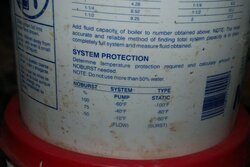I was anxiously awaiting our first real cold snap to see how the new boiler was going to perform under actual battlefield conditions. So here's the deal:
On two consecutive below-zero nights, I loaded the boiler up around 11:00 p.m and went to bed. At 7:00 the following mornings, I had a house in the mid 70s and a firebox full of hot coals. Plus I'm heating half of a single-pane glass greenhouse, which I didn't do before.
This compares to our old wood boiler, which on below zero nights would have needed to be loaded full around midnight, then again at 4:00 a.m., resulting in house temps in the mid to low 60s, and a long day of firing it hard to get back up around 70.
So I'm pretty happy.
On two consecutive below-zero nights, I loaded the boiler up around 11:00 p.m and went to bed. At 7:00 the following mornings, I had a house in the mid 70s and a firebox full of hot coals. Plus I'm heating half of a single-pane glass greenhouse, which I didn't do before.
This compares to our old wood boiler, which on below zero nights would have needed to be loaded full around midnight, then again at 4:00 a.m., resulting in house temps in the mid to low 60s, and a long day of firing it hard to get back up around 70.
So I'm pretty happy.



